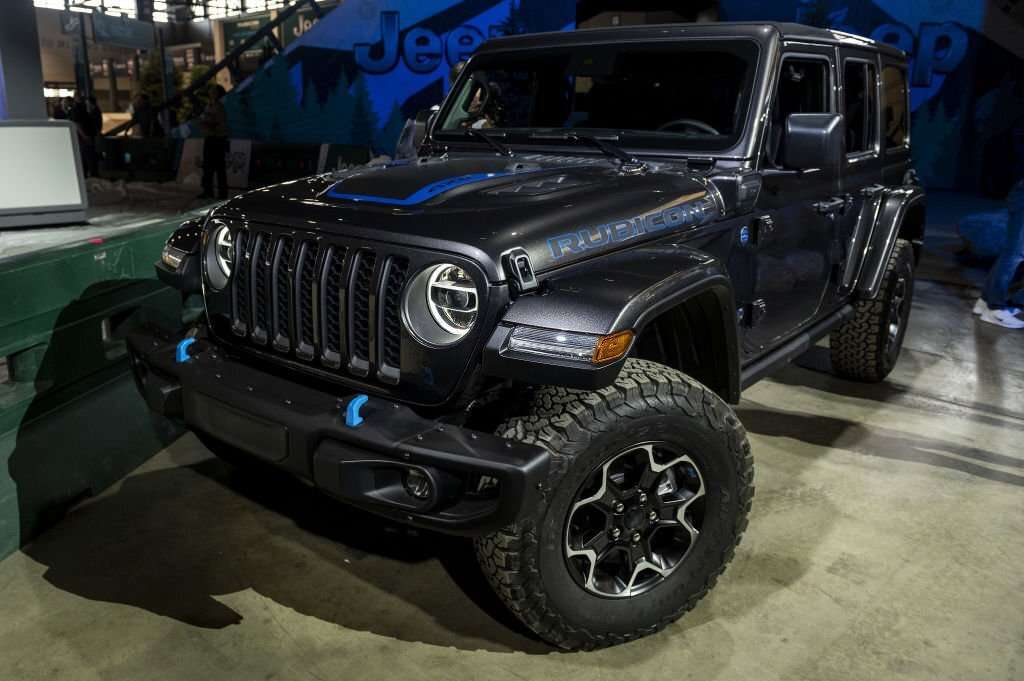The Jeep Wrangler is one of the best off-road vehicles out there, but it doesn’t come with off-road shocks by default. It’s easy to install them and they make a huge difference! But how long do they last? And what are some of the factors that affect shock life expectancy? We’ll cover that here.
As shocks are a key part of how a vehicle handles and rides, the quality of your shocks can make or break how your car or truck performs on the road.
There are many things to consider when you’re looking for shocks for your Jeep Wrangler, including the weight of your Jeep, the type of terrain you’ll be driving on, and what kind of performance you’re looking for.
Jump to
How long do shocks last on a Jeep Wrangler?
Well, it depends on a few factors. First, it depends on the type of shock you’re talking about, because some of them are meant for off-roading and others are meant for on-roading, so they’re made with different materials and have different features.
Moreover, it depends that the amount of time your shocks will last depends on how frequently you use your Jeep and what you do with it. If you’re an off-roader and you’re driving over rocks and logs, then you’ll wear out your shocks in less than one year.
Most importantly, the shock absorbers on your Jeep Wrangler are designed to help keep the body of the car level and keep it traveling straight down the road, even when you’re going over bumps in the road. Because they play such an important role in keeping your vehicle running smoothly, it is important that you replace them when they start to get old.
Lastly, Jeep Wrangler shocks are designed to last between 30,000 and 50,000 miles; however, that can vary depending on the vehicle’s terrain, driving conditions, and how many times the shocks have been replaced. Generally speaking, if you maintain your vehicle well with regular oil changes and tire rotations, your vehicle will last longer.
What factors affect shock life?
The shock life of a Jeep Wrangler is affected by several factors including the following:
- Vehicle weight
- The load capacity
- Suspension travel and the frequency of driving
- The load capacity of your Jeep Wrangler will determine the weight it can carry and hence the frequency of driving.
- Inflation pressure
- Road surface
- Type of shock absorber (monotube or twin-tube)
- The type of terrain it is driven on and the quality of the shocks that are fitted to the vehicle.
What maintenance should you do and when should you expect to need replacement?
Since shocks are an important part of your vehicle, it’s important that you keep them in good condition and regularly inspect them to see if they need to be replaced and then you replace them when they start to show signs of wear. For shocks, the maintenance required is basically just a replacement. But if you want to go the extra mile, you can look into upgrading the shocks.
The first thing you should do is to check the pressure of your shocks. The pressure is measured in PSI (pounds per square inch) and you should check it to see if it’s in the recommended range. The recommended pressure for your shocks should be between 50 and 100 PSI.
If the shocks are leaking or you’re having trouble with the pressure, then you should replace them. You can find replacement shocks at your local auto parts store or you can get them online from the best Jeep Wrangler shocks suppliers.
If the shocks are old, then you should replace them because the materials used to make them will eventually wear out.
How do you install new shocks on a Jeep Wrangler?
You can install new shocks on a Jeep Wrangler fairly easily if you know where the top of the shock is located. You will be swapping out your old shocks for new shocks, so let me explain how to do this:
- The first thing you want to do is jack up your Jeep and set it on jack stands.
- Then, remove the wheels and take off the shock absorbers.
- If your shocks are leaking or old, then you’ll want to replace them at this point.
- Next, unbolt the old shock absorber from the suspension arm.
- Install the new shock.
- Finally, reinstall the wheels and put the Jeep back on the ground.
How to tell if your shocks are worn out?
You can tell if your shocks are worn out if you notice any of the following:
- Leakage
- Poor handling
- Squeaks
- Shocks that sag or droop
- Squeaks when you accelerate
- Squeaks when you brake
If you notice any of these signs, then it’s time to replace your shocks.
Conclusion:
Jeep Wrangler shocks are very important to the durability of your vehicle. They help the vehicle to handle bumps and road imperfections. But if you notice any of the above-mentioned signs, then it’s time to replace them.
There are a number of things you can do to make sure your Jeep Wrangler shocks last longer. This includes maintaining the vehicle well with regular oil changes and tire rotations, inspecting your shocks regularly to see if they need to be replaced, and making sure you replace them when they start to show signs of wear.
Our best advice is to make sure you replace your shocks when they start to show signs of wear. Because they’re responsible for the safety of your passengers and you.
We hope this article was helpful and that you learned a thing or two about how to keep your Jeep Wrangler shocks in good shape. If you have questions about shocks, feel free to ask us in the comment section below.

My name is Tom Harris, founder of this blog. I’m a mechanical engineer with 20 years of experience in the automotive industry. I’m here to help you with your vehicle’s problems, easy fixes and share my insights and experience so that you can enjoy your rides more.

